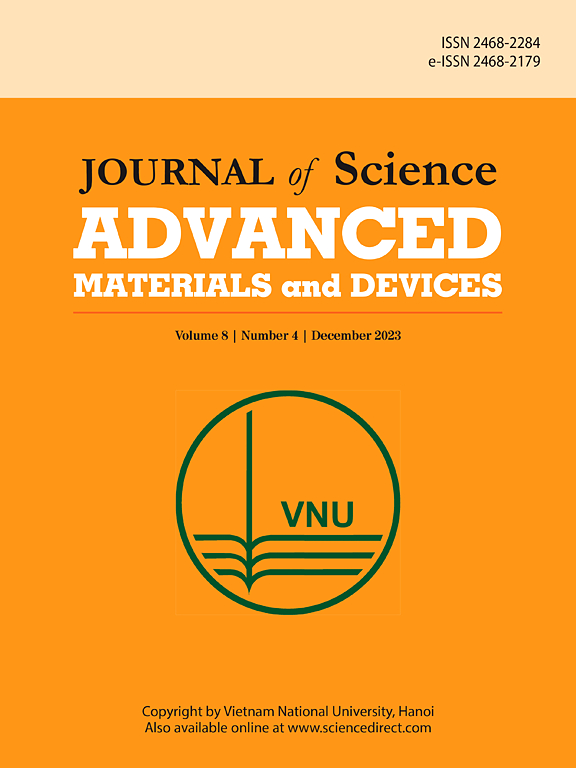XPS analysis, structural, physical and radiation shielding performance of innovative lead-free boro-tellurite glasses: A comprehensive experimental study
IF 6.7
3区 材料科学
Q1 MATERIALS SCIENCE, MULTIDISCIPLINARY
Journal of Science: Advanced Materials and Devices
Pub Date : 2025-03-20
DOI:10.1016/j.jsamd.2025.100879
引用次数: 0
Abstract
Three glass samples were fabricated using the melt quench method to explore glass stability and radiation shielding properties. The current glasses are named CdTeB, ZnTeB, and SrTeB. The experimental shielding properties were performed for the current glasses with energy ranging from 0.184 to 0.810 MeV. Meanwhile, X-ray photoelectron spectroscopy (XPS) was used to explore glass stability and the chemical states of different elements. The relative difference between theoretical and experimental radiation shielding properties results is less than 7.5 %, indicating high compatibility between the two results. The CdTeB sample showed the highest shielding properties. For example, the mass attenuation coefficient (MAC) values at 0.184 MeV are 0.492, 0.585, and 0.609 cm2/g for SrTeB, ZnTeB, and CdTeB samples. According to the XPS analysis of O 1s spectra, the ZnTeB sample contained the highest bridging oxygen (BO), followed by CdTeB and then SrTeB. Conversely, the SrTeB sample showed the highest nonbridging oxygen (NBO), indicating reduced glass stability. The XPS results are compatible with physical and structural properties. Based on the acquired results, the fabricated samples are valid for medical radiation shielding.
求助全文
约1分钟内获得全文
求助全文
来源期刊

Journal of Science: Advanced Materials and Devices
Materials Science-Electronic, Optical and Magnetic Materials
CiteScore
11.90
自引率
2.50%
发文量
88
审稿时长
47 days
期刊介绍:
In 1985, the Journal of Science was founded as a platform for publishing national and international research papers across various disciplines, including natural sciences, technology, social sciences, and humanities. Over the years, the journal has experienced remarkable growth in terms of quality, size, and scope. Today, it encompasses a diverse range of publications dedicated to academic research.
Considering the rapid expansion of materials science, we are pleased to introduce the Journal of Science: Advanced Materials and Devices. This new addition to our journal series offers researchers an exciting opportunity to publish their work on all aspects of materials science and technology within the esteemed Journal of Science.
With this development, we aim to revolutionize the way research in materials science is expressed and organized, further strengthening our commitment to promoting outstanding research across various scientific and technological fields.
 求助内容:
求助内容: 应助结果提醒方式:
应助结果提醒方式:


